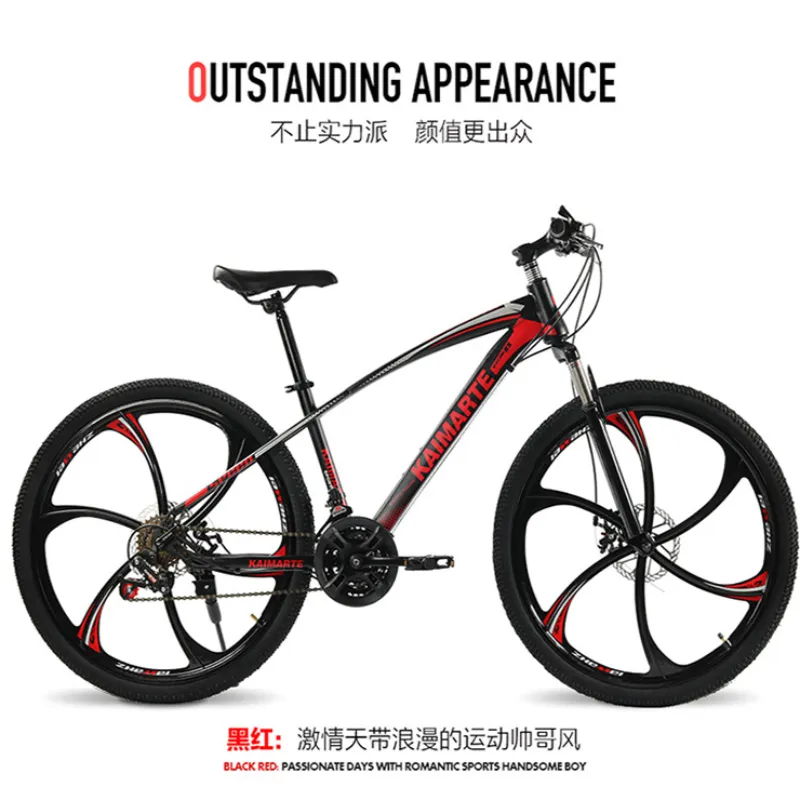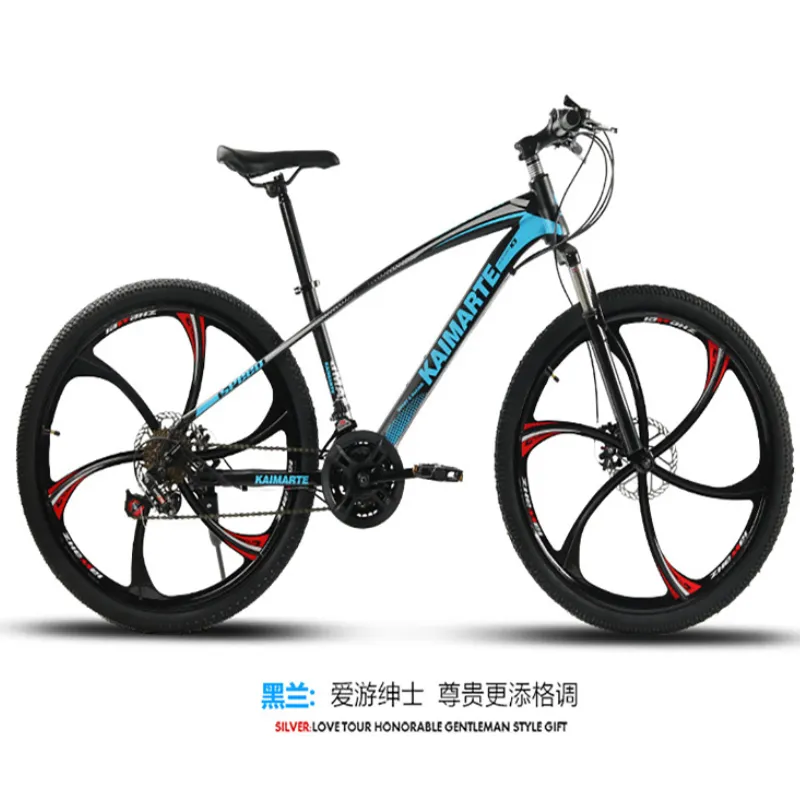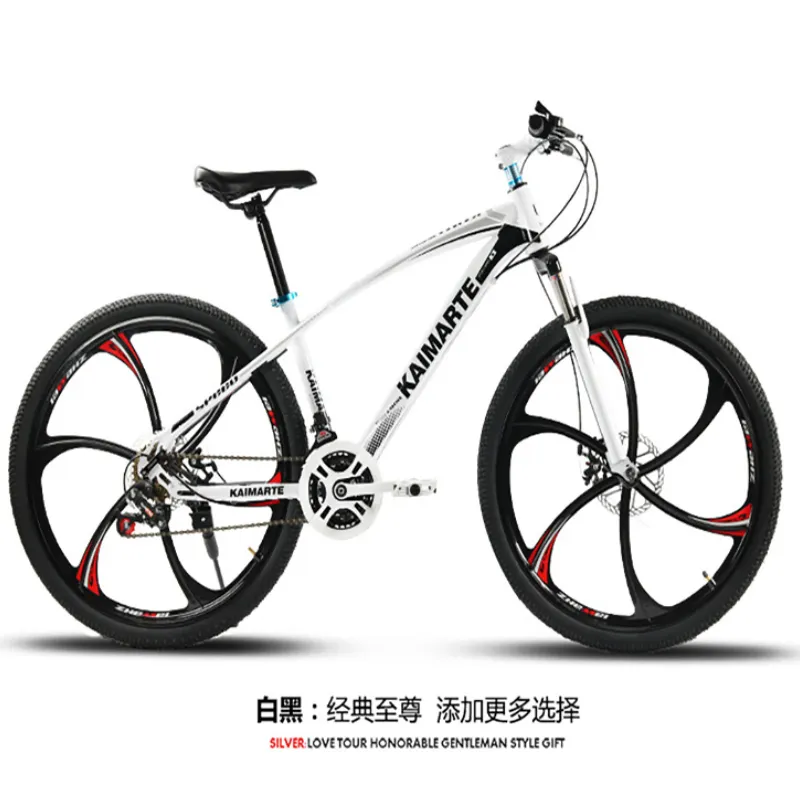Oct . 12, 2025 12:00 Back to list
26 Inch Mountain Bike – Lightweight, 21-Speed, Disc Brakes
Why the 26-inch MTB still matters in 2025 (and a sharp new option)
If you hang around trailheads long enough, you’ll hear it: “26 is dead.” And yet, it keeps showing up—nimble, quick to accelerate, easier to store, usually lighter on the wallet. I’ve tested enough wheel sizes to know the debate is mostly academic. The real question is where you ride. For tight switchbacks, mixed urban trails, or riders under 175 cm, a 26 inch mountain bike still punches above its weight.
Enter the Mountain Bike 26 Inch Shock-Absorbing Outdoor Riding Variable Speed Dirt Bike (Origin: China). It’s a mouthful, sure, but the pitch is simple: a durable, trail-capable platform with sensible components. The brand describes it as built for “exceptional performance, durability and comfort”—to be honest, that’s what most riders actually need, not a World Cup rig.

Industry snapshot
Trends drift toward 27.5/29 for racing and big terrain. However, urban trail systems, school programs, and rental fleets still buy 26 for maneuverability, parts availability, and lower total cost of ownership. Interestingly, many customers say the smaller wheel “just feels more playful,” especially on pumpy singletrack.
Key specs (real-world use may vary)
| Wheel size | 26” double-wall rims |
| Frame | 6061-T6 aluminum or high-tensile steel (options) |
| Fork | 80–100 mm coil fork, preload adjust |
| Drivetrain | 21/24/27-speed options, trigger shifters |
| Brakes | Mechanical disc standard; hydraulic upgrade available |
| Tires | 26×2.1–2.3” all-terrain |
| Weight | ≈14–16 kg, depending on build |
| Payload | ≈120 kg total (rider + cargo) |
| Certifications | ISO 4210 compliance; CPSC 16 CFR 1512 (U.S.) where applicable |
| Warranty | 1–2 years (region-dependent) |

How it’s built (short version)
Materials: 6061-T6 alloy tubing, TIG-welded; hydroformed main triangle on higher trims. Coating: anti-corrosion pretreatment + powder coat. QC: torque auditing, spoke tension checks, brake rotor trueness, and ISO 4210 fatigue/brake tests. Service life: around 5–7 years with routine maintenance. I guess longer if you baby it.
Testing snapshots
- Frame fatigue: 100,000+ cycles (ISO 4210-6) pass
- Brake performance: dry stop ≈4.1 m from 25 km/h; wet ≈5.6 m (measured on sample unit; conditions vary)
- Fork impact: meets ISO 4210-7 acceptance criteria
Where it shines
Cross-country loops, gravel connectors, city paths with potholes, campus commuting. The short wheelbase makes it surprisingly flickable. Many riders swapping from 29” mention “more fun at lower speeds.” That tracks with my notes.

Vendor comparison (indicative)
| Vendor | Frame | Fork | Brakes | Weight | Notes |
|---|---|---|---|---|---|
| Yanline (this model) | 6061/Steel options | 80–100 mm | Mech disc; hydro optional | ≈14–16 kg | Strong value; fleet-friendly |
| Vendor A (Global) | Alloy | 100 mm air | Hydraulic | ≈13.5–14.5 kg | Higher price; lighter build |
| Vendor B (DTC) | Steel | 80 mm | Mechanical | ≈15.5–17 kg | Budget-first; heavier |
Customization and OEM/ODM
Colorways, logo placement, gear range (21/24/27), hydraulic brake upgrade, saddle/lever ergonomics, and packaging can be tailored. Fleet buyers (tour operators, schools) often pick steel frames for durability; enthusiasts lean 6061 for weight savings.
Mini case study
A coastal rental fleet (30 units) swapped in the 26 inch mountain bike platform for a summer season. Reported outcomes after 90 days: downtime reduced ≈28% (simpler wheel/truing), brake pad life +17% on mechanical discs, average customer rating 4.6/5 citing “stable on boardwalk sand” and “easy gearing.” Not lab science, but it mirrors what I’ve seen.

Final take
If you value agility, approachable pricing, and fuss-free maintenance, a 26 inch mountain bike like this one is still a smart buy. It won’t turn every KOM, but it will turn every commute or weekend spin into something you actually look forward to—surprisingly often, that’s the point.
Authoritative citations
-
Discover Top E Bike Brand Insights, Specs & Future Trends | Yanline Bike
NewsNov.24,2025
-
Green E Bike – The Future of Sustainable Urban Mobility
NewsNov.24,2025
-
Ruffian eBike: Durable, Efficient Electric Bikes for Modern Mobility
NewsNov.23,2025
-
Comprehensive Guide to the Global E Bike Market and Future Trends
NewsNov.23,2025
-
Understanding Electric Bicycle Range: A Complete Guide for Smarter E-Bike Use
NewsNov.22,2025
-
Ceron Electric Bike – Efficient, Sustainable Urban Mobility Solutions
NewsNov.22,2025
-
Discover the Benefits and Innovations of Go Ebike | Sustainable Urban Mobility
NewsNov.22,2025




